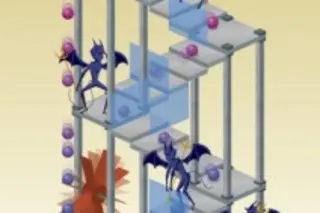My teachers in grade school always said knowledge was power, but who knew they were being literal, if perhaps imprecise. Knowledge, it turns out, is energy, and it converts at a rate of 28 percent, according to Shoichi Toyabe, of Chuo University, and Masaki Sano, of the University of Tokyo. Their experiment has its origins back in 1871, when James Maxwell proposed a thought experiment: A demon controls the only door in a wall separating two sealed chambers filled with gas molecules. The demon allows only fast moving particles to enter one room, and only slow moving particles to enter the other room. After a while, one room has only fast moving particles, and the other has only slow moving particles. The system has lost entropy, but without expending any energy, creating a seeming violation of the second law of thermodynamics. Leo Szilard, a Hungarian physicist, offered a key insight ...
Physicists Prove Knowledge is Power --- Almost Literally
Discover how knowledge is energy, with insights from Sano and Toyabe about information to energy conversion and Maxwell's paradox.
More on Discover
Stay Curious
SubscribeTo The Magazine
Save up to 40% off the cover price when you subscribe to Discover magazine.
Subscribe













